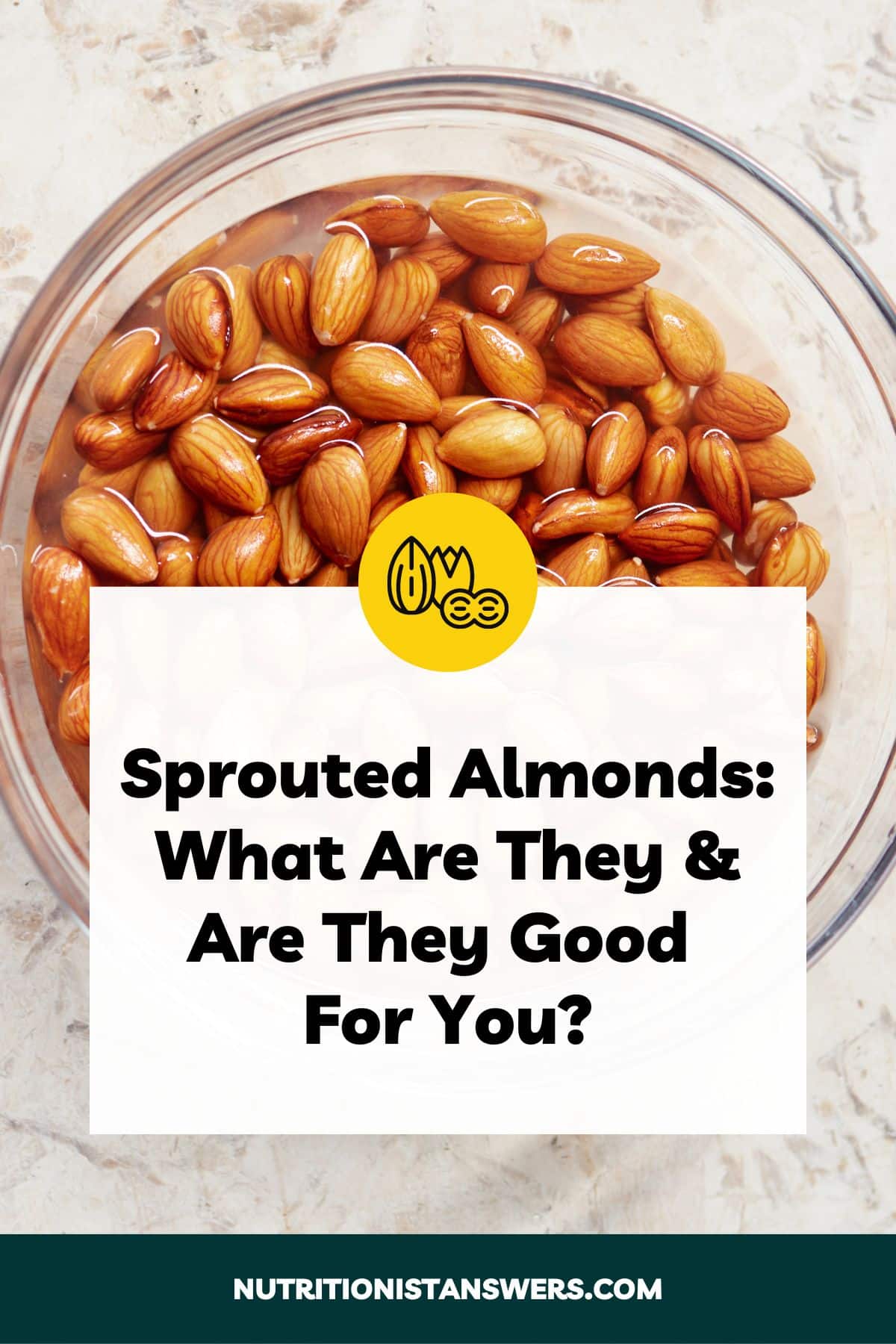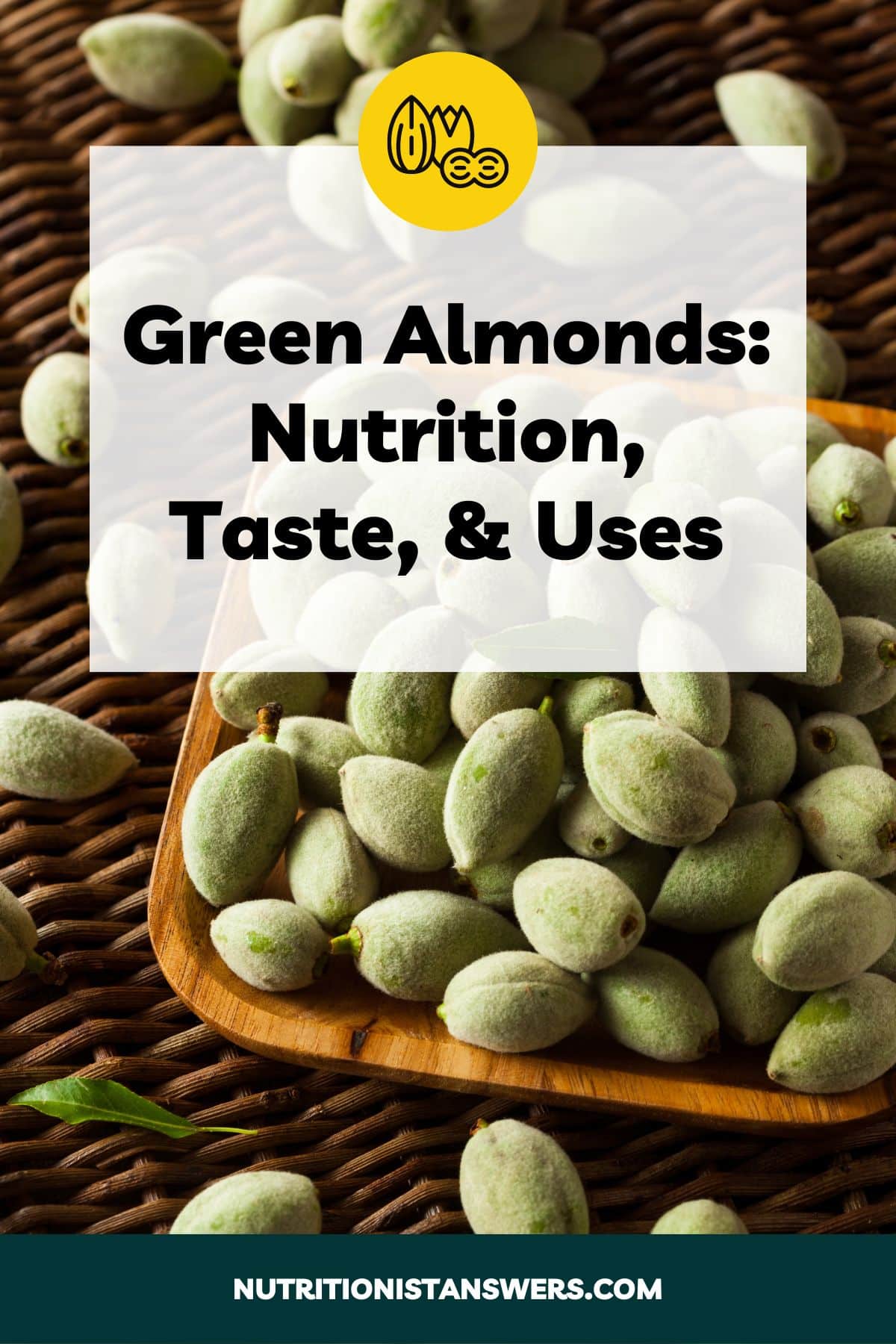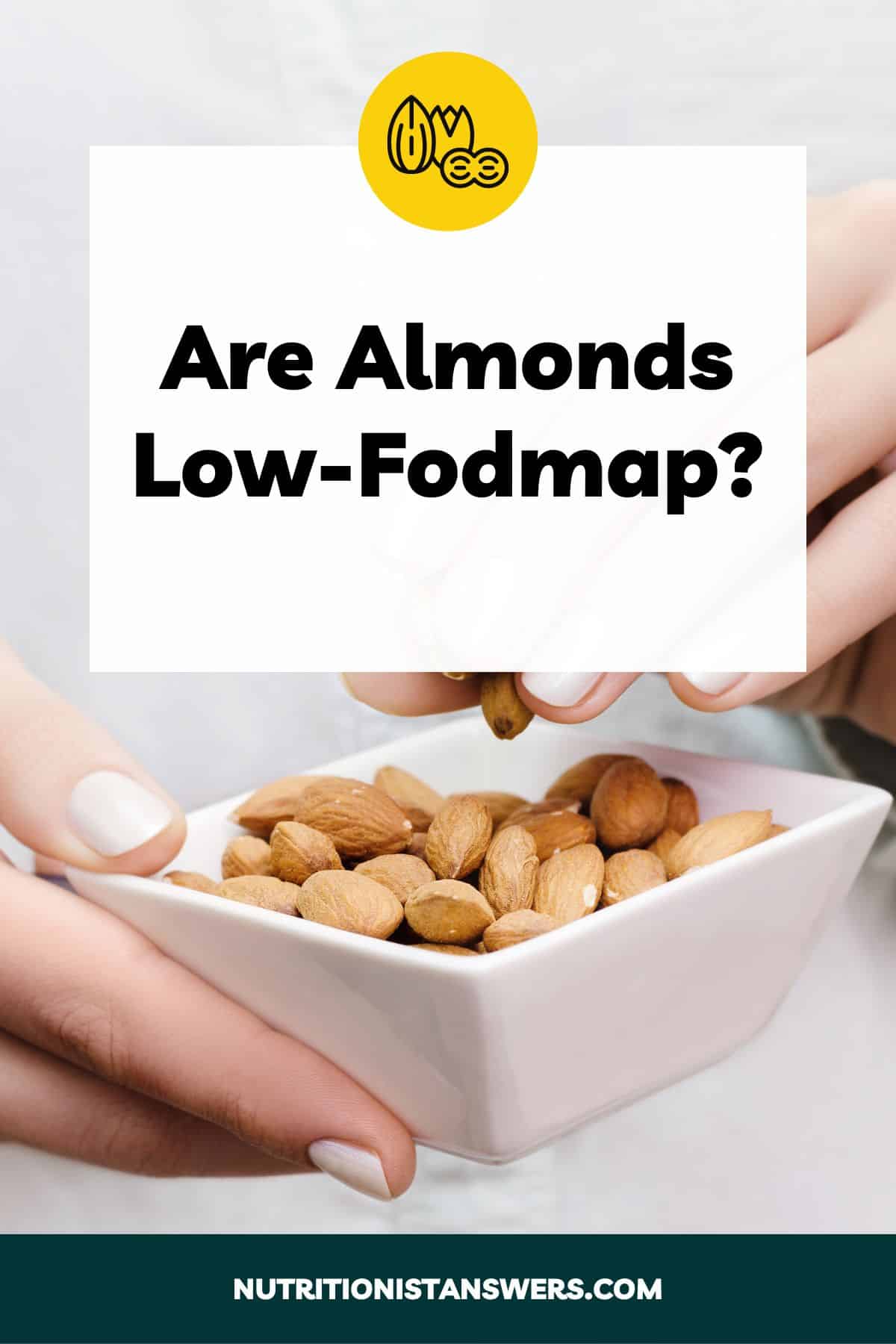Cashew milk and almond milk are non-dairy milk alternatives that are popular among vegans and people with lactose intolerance or dairy allergies.
If you’re thinking of making the switch to either of these types of milk, it helps to understand how they differ so you can decide which one best fits your needs.
In this article, we’re sharing an in-depth comparison of cashew milk and almond milk, including their differences in flavor, nutrient content, available forms, and prices.
Please note that this article contains affiliate links. If you click one of these links and make a purchase, we may earn a commission. As an Amazon Associate, we earn from qualifying purchases.
Flavor comparison
Cashew milk tastes earthy, nutty, and slightly sweet, with a subtle cashew flavor.
Almond milk tastes similar to cashew milk but tends to be a little less earthy and has a stronger nutty flavor.
Both milks have mild flavors that pair well with sweet and savory ingredients alike.
Nutrition comparison
Almond milk and cashew milk nutrition vary widely depending on how many nuts are used and how they are processed.
Recipes for homemade nut milk call for 1 cup of nuts to 4-5 cups of water, which amounts to 15-20% nuts (1, 2). Many store-bought nut milks, on the other hand, contain as little as 2% nuts (3).
All of the naturally-occurring nutrients in nut milks come from the nuts — the rest is just water.
So, this means that nut milks made with fewer nuts are lower in calories, protein, fat, carbohydrates, and certain vitamins and minerals.
To make up for the lack of nutrition, these products are sometimes fortified with calcium and vitamins A, D, and E.
Many store-bought nut milks also include added oils and gums that act as emulsifiers and thickeners. These additives contribute a small amount of fat and fiber to the final product.
Here’s a side-by-side comparison of the calorie and macronutrient content of cashew milk and almond milk, based on an 8-ounce (1-cup) serving size:
| Nutrient | Almond milk (8 oz) (4, 5, 6, 7, 8, 9) | Cashew milk (8 oz) (10, 11, 12, 13) |
| Calories | 30-130 | 25-130 |
| Protein | 1-5 grams | 1-4 grams |
| Fat | 3-11 grams | 2-10 grams |
| Carbohydrates | 1-3 grams | 1-7 grams |
| Fiber | 0-3 grams | 0 grams |
| Sugars | 0-1 gram | 0-1 gram |
Calories
Cashew milk and almond milk provide a similar number of calories, each providing between 30 and 130 calories.
Homemade versions and higher-quality products made with more nuts are on the higher end of this calorie range.
Elmhurst Unsweetened Almond Milk and Elmhurst Unsweetened Cashew Milk are the highest-calorie, richest-tasting store-bought nut milks we could find, with 130 calories per 8-ounce serving. They’re also made with just two ingredients: nuts and water.
Silk Unsweetened Almond Milk and Silk Unsweetened Cashew Milk are the most diluted and contain only 30 or 25 calories per 8-ounce serving, respectively. They also contain many additives like gums, preservatives, and natural flavors.
If you enjoy creamy, rich nut milk, it is probably worth splurging for the premium brands.
Protein
Almond milk provides slightly more protein than cashew milk because almonds are 38% higher in protein than cashews (14, 15).
One serving of almond milk provides up to 5 grams of protein, while cashew milk can have up to 4 grams.
Both cashew milk and almond milk are low in protein compared to cow’s milk, which offers 8 grams per 8-ounce serving (16).
Fat
Almond milk and cashew milk contain a similar amount of fat.
Brands made with a lower percentage of nuts, like Silk and Almond Breeze, tend to be very low in fat (2-3 grams per serving).
Meanwhile, homemade versions and higher-quality brands, like Elmhurst, can contain up to 11 grams of fat per serving (4, 10).
Carbohydrates
Cashew milk tends to be higher in carbohydrates than almond milk because cashews are naturally about 50% higher in carbohydrates than almonds (14, 15).
For example, Elmhurst unsweetened cashew milk contains 7 grams of carbohydrates per serving, while the same brand of almond milk contains just 3 grams of carbohydrates per serving.
Almonds contain 4 times more fiber than cashews, but much of the fiber gets strained out during processing. Because of this, store-bought cashew milk contains no fiber, while almond milks can contain a few grams per serving.
MALK Unsweetened Almond Milk is the highest-fiber almond milk we could find, with 3 grams of fiber per 8-ounce serving.
Keep in mind that sweetened versions of cashew milk and almond milk will be even higher in carbohydrates due to added sugars.
Vitamins and minerals
Many store-bought almond milk and cashew milk products are fortified with calcium and vitamins A, D, and E.
However, unfortified products and homemade versions of almond and cashew milk are not a good source of calcium, vitamin A, or vitamin D.
Here’s a side-by-side comparison of the vitamin and mineral content of unsweetened almond milk and cashew milk, based on a 1-cup (8 oz) serving size. We’ve included both fortified and unfortified versions:
| Nutrient | Almond milk, unsweetened, unfortified (8 oz) (4, 8, 9) | Cashew milk, unsweetened, unfortified (8 oz) (10, 12) | Almond milk, unsweetened, fortified (8 oz) (5, 6, 7) | Cashew milk, unsweetened, fortified (8 oz) (11, 13) |
| Vitamin A | Not listed | Not listed | 140-200 mcg (16-22% DV) | 90-150 mcg (10-17% DV) |
| Vitamin D | 0 mcg (0% DV) | 0 mcg (0% DV) | 2-5 mcg (10-25% DV) | 2.5-9 mcg (13-45% DV) |
| Vitamin E | Not listed | Not listed | 4-7.5 mg (27-50% DV) | 0-4 mg (0-27% DV) |
| Sodium | 5-10 mg (<1% DV) | 10-95 mg (1-4% DV) | 140-170 mg (6-7% DV) | 10-120 mg (1-5% DV) |
| Potassium | 80-160 mg (2-3% DV) | 50-145 mg (1-3% DV) | 40-170 mg (1-4% DV) | 0 mg (0% DV) |
| Calcium | 40-70 mg (3-5% DV) | 15-40 mg (1-3% DV) | 440-470 mg (34-36% DV) | 14-390 mg (1-3% DV) |
| Magnesium | Not listed | Not listed | 0-15 mg (0-4% DV) | Not listed |
| Iron | 0-1 mg (0-6% DV) | 0.4-1 mg (2-6% DV) | 0.2-0.7 mg (1-4% DV) | 0.5-0.7 mg (3-4% DV) |
Overall, almond milk and cashew milk contain very similar amounts of vitamins and minerals, but they are not considered “good” sources of these nutrients since the milks are mostly water.
To get more nutrition from nut milks, you can purchase fortified versions, which are high in vitamin A, vitamin D, and calcium. These nutrients are not naturally found in high amounts in almonds or cashews.
Keep in mind that we couldn’t find nutritional information about ALL of the vitamins and minerals found in almond and cashew milk, so we only included the nutrients that were listed on nutrition labels.
It’s likely that these nut milks also provide other vitamins and minerals that are found in almonds and cashews, like zinc and copper (14, 15).
Available forms
1. Refrigerated (cashew milk and almond milk)
Both cashew milk and almond milk are available in refrigerated cartons. These are usually found next to the other dairy-free milks in the milk cooler at the grocery store.
Cashew milk is usually plain and unsweetened, while almond milk can be sweetened or unsweetened and comes in a variety of flavors, including vanilla and chocolate.
Refrigerated nut milks must stay refrigerated and are best if used within 7-10 days after opening.
Almond milk has been mass-produced for a longer period of time, so you may find more varieties at a lower price point than cashew milk.
2. Shelf-stable (cashew milk and almond milk)
Shelf-stable versions of almond milk and cashew milk are also available. These are usually sold in aseptic packaging, which is designed to keep the milk from spoiling without refrigeration.
Shelf-stable almond and cashew milks are usually found near other shelf-stable products, such as canned soups and vegetables.
These products can be stored without refrigeration for 6 months or longer, but should still be refrigerated and consumed within 7-10 days after opening.
3. Powdered (cashew milk and almond milk)
Powdered versions of almond milk and cashew milk are made from nuts that have been ground into a fine powder. They sometimes include powdered sweeteners and flavors as well.
These products are usually sold in small packets or jars and require you to mix them with water before use.
Powdered almond milk and powdered cashew milk are shelf-stable and can last for up to 12 months when stored correctly.
4. Concentrated (cashew milk and almond milk)
Cashew and almond milk concentrates usually are basically nut butters made from unroasted nuts and no other ingredients.
They’re designed to blend easily with water, allowing you to make your own nut milk at home. Nut milk concentrates come in jars or squeezable packets and can be purchased online here and here.
Nut milk concentrates will stay fresh for several months if stored in a cool, dark place. Any nut milk made from concentrate should be refrigerated immediately and used within 7-10 days.
5. Creamer (almond milk)
If you prefer to use non-dairy milk in your coffee, look for almond milk creamer in the refrigerated section of the grocery store, near the regular dairy creamers.
Almond creamer is a concentrated (and sometimes sweetened and flavored) version of almond milk.
It contains significantly more calories than regular nut milk, so it is used in small quantities to add creaminess to coffee drinks, rather than as a stand alone beverage.
For example, 1 cup of Califa Farms unsweetened almond creamer contains more than four times as many calories as their regular unsweetened almond milk.
Coffemate Natural Bliss used to make a sweetened cashew coffee creamer, but it has been discontinued.
Recommended uses
Cashew milk and almond milk can be used in many of the same ways.
1. As a beverage
Both almond milk and cashew milk can be enjoyed as stand-alone beverages.
Almond milk has a lighter taste that is closer to cow’s milk, while cashew milk is more creamy and earthy.
Compared to cow’s milk, almond milk and cashew milk are lower in calories, fat, carbohydrates, and protein.
If you purchase fortified nut milks, they will contain roughly the same amount of calcium as cow’s milk, per serving.
2. In baked goods
Almond milk and cashew milk can be used as substitutes for cow’s milk when baking in a 1:1 ratio. (In other words, use the same amount of nut milk as cow’s milk.)
Choose a sweetened nut milk product to mimic the natural sugars found in cow’s milk.
For example, Silk Original Almond Milk contains 7 grams of sugar per serving, while whole cow’s milk contains 12 grams of sugar per serving. You can add a pinch of extra sugar to the recipe to make up for the difference as well.
Note that baked goods made with almond or cashew milk may finish cooking sooner, brown slightly less, and have a lighter taste since they are higher in water and lower in fat and protein than cow’s milk.
3. In savory dishes
Almond milk or cashew milk can also be used in place of cow’s milk in savory dishes, like creamed spinach or mashed potatoes
You can substitute the non-dairy milk in a 1:1 ratio, but if you’re heating the almond or cashew milk, take extra care to ensure that it doesn’t burn and become bitter while simmering.
When cooking savory dishes, you can use unsweetened or lightly sweetened almond or cashew milk, but stay away from flavored varieties.
Final thoughts
Cashew milk and almond milk are popular dairy-free milk alternatives that have a smooth, creamy texture and a slightly sweet, nutty taste.
Generally, cashew milk is slightly higher in carbohydrates, while almond milk tends to contain a little more protein. They provide similar amounts of calories and fat.
Store-bought versions are often fortified, so they contain much higher amounts of calcium and vitamins A, D, and E than homemade almond or cashew milk.
Both almond and cashew milk are available in refrigerated and shelf-stable forms, as well as powdered and concentrated versions.
Interested in how almond milk compares to other milks? Check out Almond Milk vs Coconut Milk and Almond Milk vs Skim Milk.
Amy Richter is a Registered Dietitian Nutritionist based in Missouri. She is an experienced nutrition writer and medical advisor for Healthline and Medical News Today. Amy is passionate about all things food-related and enjoys translating complex science into easy-to-understand articles.





